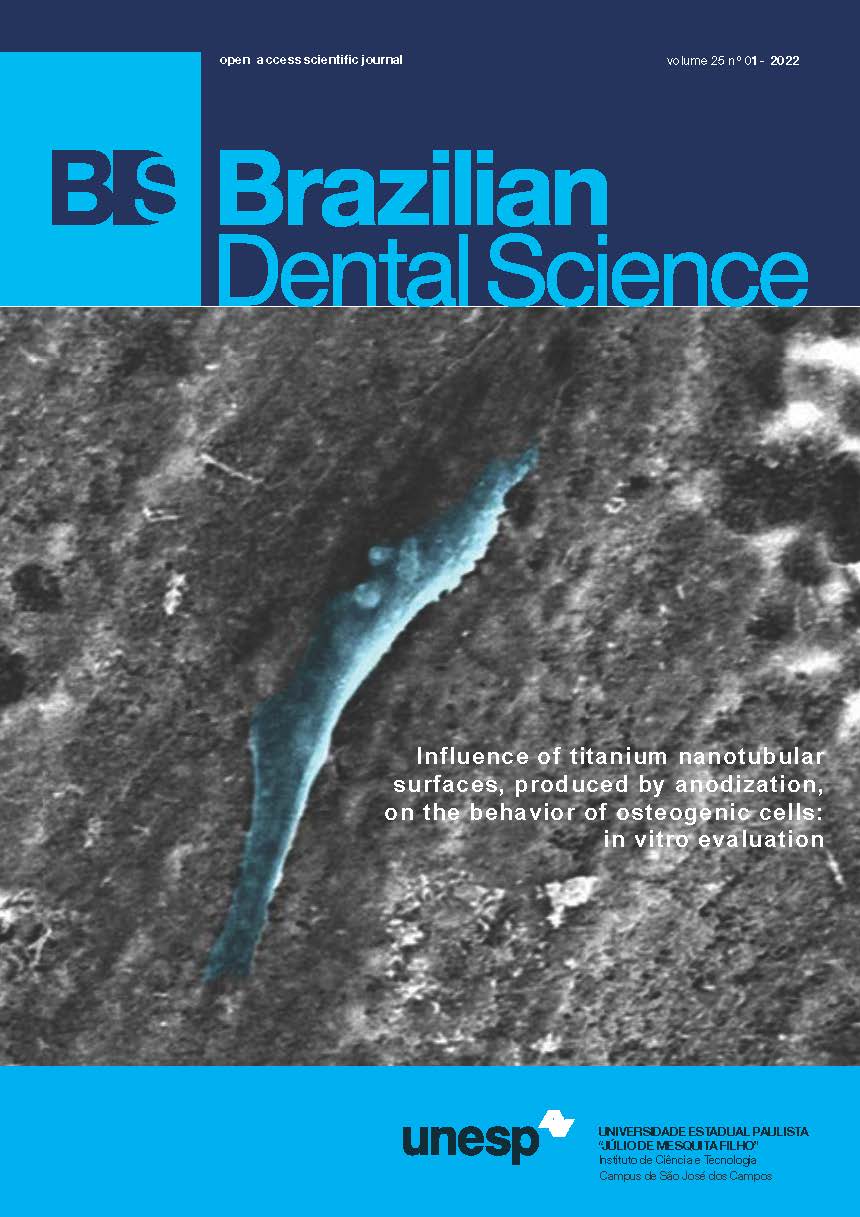Color change, tooth sensitivity, aesthetic self-perceptions and quality of life after at-home dental bleaching
DOI:
https://doi.org/10.4322/bds.2022.e2739Abstract
Objective: The aim of this study was to determine the color change, tooth sensitivity, aesthetic self-perception
and quality of life after at-home dental bleaching. Material and Methods: Dental examination was performed
and the initial color of the upper right incisor was recorded using a spectrophotometer (Easyshade Compact,
Vita Zahnfabrik) and CIELab parameters. Individual vinyl trays were delivered to the patients (n=37) who were
instructed to use the carbamide peroxide 16% (Total Blanc Home C16%, DFL) for 2 hours daily for 2 weeks.
One-week after the end of treatment, measurements were repeated to calculate color (Eab, E00) and whiteness
index (WID) variations. Oral Health Impact Profile (OHIP) and Psychosocial Impact of Dental Aesthetics
Questionnaire (PIDAQ) questionnaires were applied before and 30 days after treatment. Tooth sensitivity was
by checked by visual analogue scale (VAS). Spearnan’s correlation tests were used to verify the possible relation
between color change parameters and sensitivity. The Wilcoxon test was applied for results obtained by OHIP and
PIDAQ questionnaires. Results: Significant color change was observed after 14 days, regardless of the considered
parameter. There was no significant correlation between sensitivity and color change. The dental self-confidence
domain increased after bleaching (p = 0.029) and the psychological impact decreased (p = 0.001). Conclusion:
At-home dental bleaching was effective on the overall whitening and the color change was not related to tooth
sensitivity. The bleaching treatment had a positive impact on the quality of life, reducing psychological discomfort
and improving dental self-confidence and aesthetic self-perception.
KEYWORDS
Aesthetics; Quality of life; Tooth whitening.
Downloads
Downloads
Published
Versions
- 2022-03-29 (2)
- 2022-01-27 (1)
How to Cite
Issue
Section
License
Brazilian Dental Science uses the Creative Commons (CC-BY 4.0) license, thus preserving the integrity of articles in an open access environment. The journal allows the author to retain publishing rights without restrictions.
=================




























